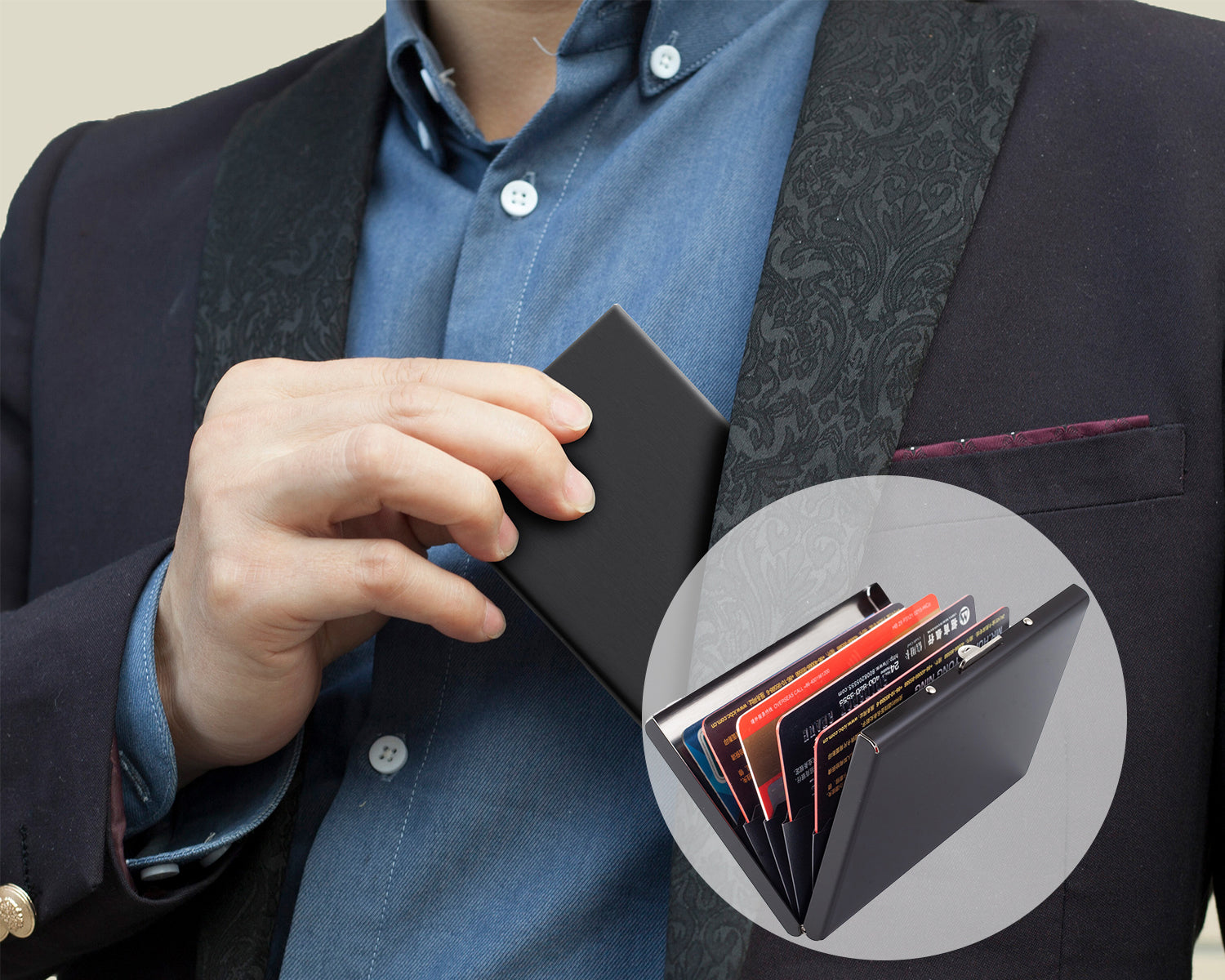The Introduction
RFID technology uses radio waves to transmit data wirelessly between RFID chips and readers. It’s used in various applications like inventory management and contactless payments.
RFID tags have a unique code that can be read by an RFID reader. This poses a risk of unauthorized access, but RFID wallets can prevent this by blocking radio frequency signals. RFID wallets protect personal information from being stolen by criminals using RFID readers, reducing the risk of loss and unauthorized access.
What is RFID Wallet?
An RFID wallet is a type of wallet designed to protect against RFID skimming, which is a type of theft where a criminal uses a device to read and record the Radio Frequency Identification (RFID) signals emitted by RFID chips found on credit cards, passports, and other personal items. The RFID wallet is made of materials, such as metal mesh or carbon fiber, that block these signals, thus preventing potential theft.
RFID blocking wallet
With RFID wallets, the RFID signals are blocked from being read by unauthorized RFID readers, thus preventing the theft of personal information by criminals. These wallets come in various shapes, sizes, and materials. Some are designed as traditional wallets, while others resemble cardholders.
Overall, RFID wallets provide an additional layer of protection against electronic pick pocketing and other types of RFID fraud. At the same time, it is necessary to understand how do RFID wallets work.
RFID wallets work by using materials that block the Radio Frequency Identification (RFID) signals emitted by RFID chips found on credit cards, passports, and other personal items.
When an RFID scanner emits a signal, the RFID chip responds by sending back its unique identification number.
However, RFID wallet is made of materials, such as metal or carbon fiber, that block these signals, thus preventing the RFID chip from being read by unauthorized RFID readers.
In essence, the RFID-blocking material in the wallet creates a Faraday cage that prevents electromagnetic radiation from passing through. This means that the RFID signals emitted by the RFID chip are not received by the RFID reader, rendering any theft attempt futile.
After understanding how RFID wallets work, we can start to choose the right RFID wallet for ourselves, There are several types of RFID wallets available on the market, each designed to meet different needs or preferences. Here are some common types of RFID wallets:
Bi-Fold Wallets: This is a traditional wallet design that folds in half and has several pockets for credit cards, cash, and ID. Bi-fold RFID wallets may be made of leather, synthetic materials, or metal.
Tri-Fold Wallets: This is similar to bi-fold wallets, but they fold in three sections and tend to have more card slots and compartments for storage.
Passport Holders: RFID blocking passport holders are specifically designed to keep your passport secure while traveling. They may have additional pockets for cards, cash, and other travel documents.
Card Holders: RFID blocking card holders come in various sizes and shapes, and can hold just a few cards or many cards. They are often made of metal or hard plastic for durability.
In addition to these types, there are also unique designs like wristlets, clutch bags, and money clips that have RFID blocking capabilities. These types are ideal for people who prefer to carry a minimal load. It is always suggested to carefully evaluate the best RFID blocking wallet that fits your needs based on the type, style, and materials used.
Keep your identity safe with RFID protector
28/07/2023









